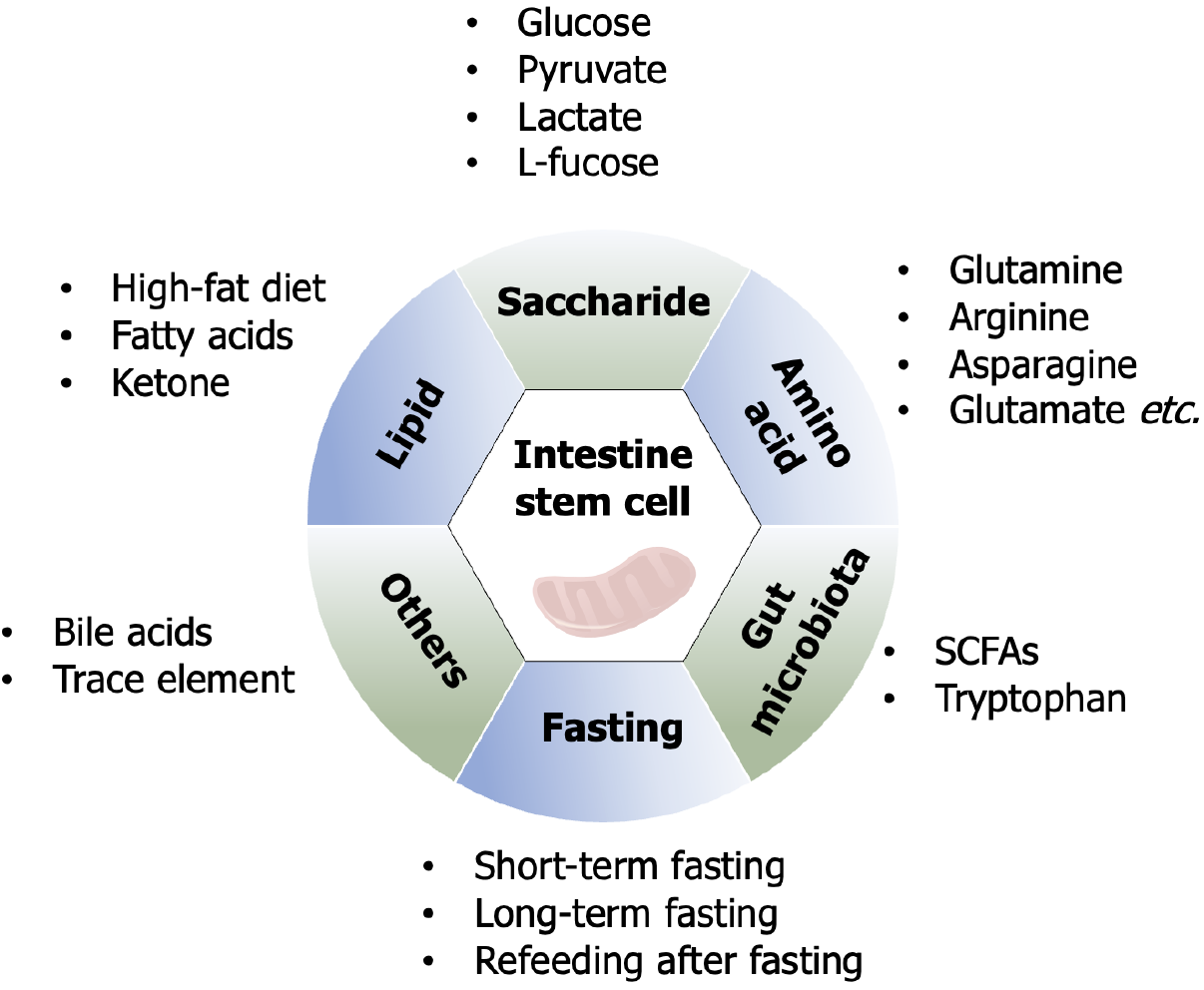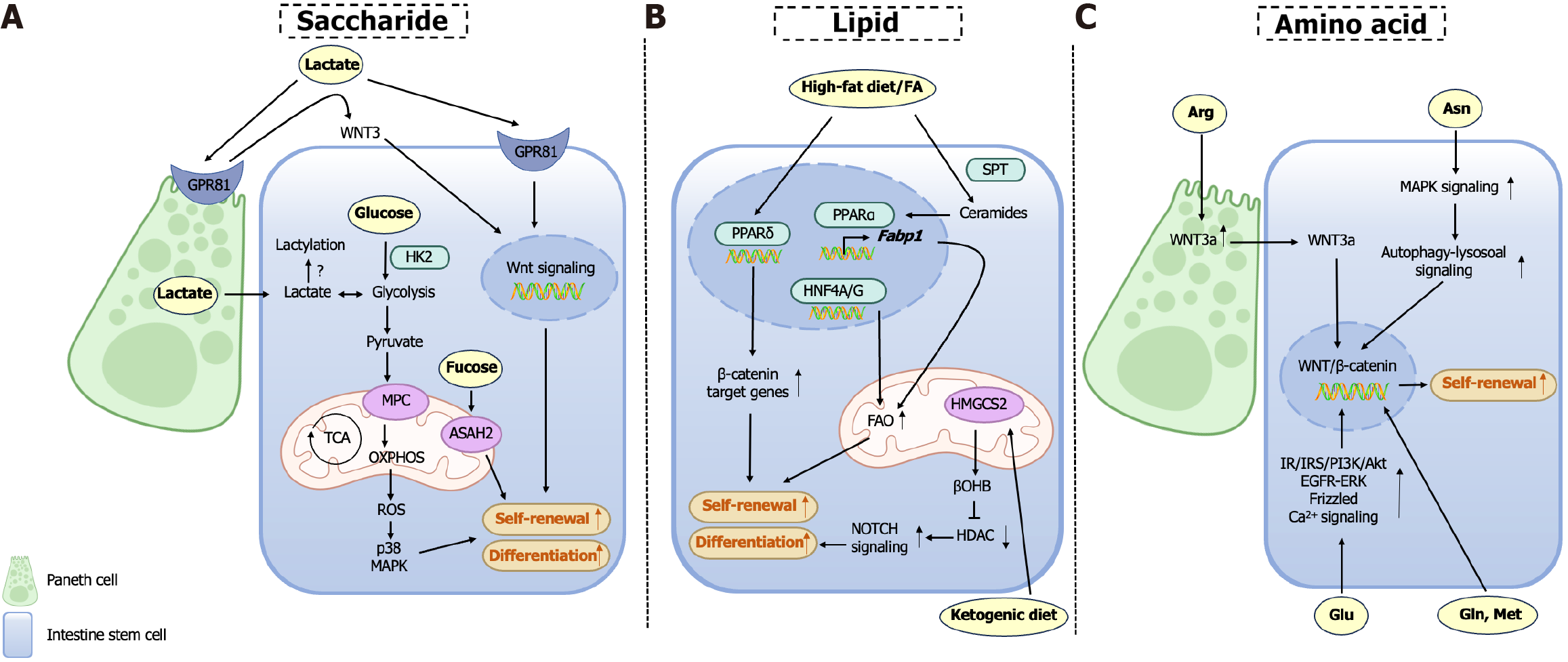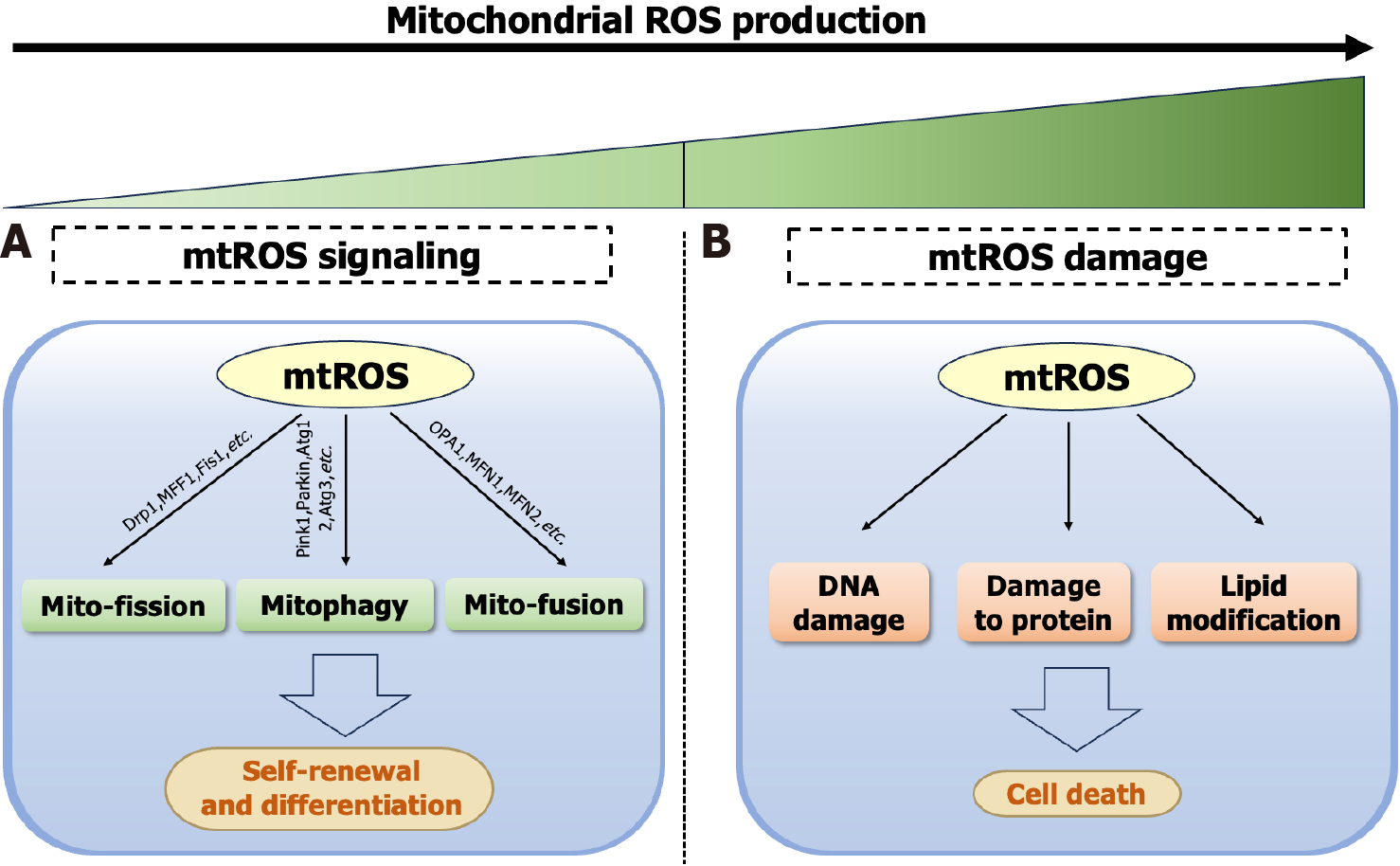Copyright
©The Author(s) 2025.
World J Stem Cells. Jul 26, 2025; 17(7): 107770
Published online Jul 26, 2025. doi: 10.4252/wjsc.v17.i7.107770
Published online Jul 26, 2025. doi: 10.4252/wjsc.v17.i7.107770
Figure 1 Schematic overview of key metabolites regulating intestinal stem cells homeostasis.
SCFAs: Short-chain fatty acids.
Figure 2 Dietary nutrients can regulate self-renewal and differentiation capacities of intestinal stem cells.
A: Glucose balances intestinal stem cell (ISC) proliferation/differentiation via glycolytic pyruvate-trichloroacetic acid-oxidative phosphorylation-reactive oxygen species-p38 axis. Lactate fuels ISC energy needs through autocrine metabolism, while concurrently stimulating Paneth cell-derived Wnt3 via Gi-protein-coupled receptor 81 to activate Wnt/β-catenin. L-fucose maintains stemness through alpha1,2-fucosylation of N-acyl sphingosine amidohydrolase 2; B: High-fat diet activates PPAR δ to enhance leucine-rich repeat-containing G protein-coupled receptor 5+ ISC proliferation. Serine palmitoyltransferase-derived ceramides activate PPAR α/fatty acid binding protein 1 stemness signaling, while hepatocyte nuclear factor 4 alpha/hepatocyte nuclear factor 4 gamma regulate fatty acid β-oxidation for self-renewal; C: Glutamine/L-arginine/methionine/glutamate /asparagine modulate ISC stemness via Wnt/β-catenin signaling. GPR81: Gi-protein-coupled receptor 81; HK2: Hexokinase 2; MPC: Mesenchymal progenitor cell; TCA: Trichloroacetic acid; OXPHOS: Oxidative phosphorylation; ROS: Reactive oxygen species; MAPK: Mitogen-activated protein kinases; ASAH2: Alpha1,2-fucosylation of N-acyl sphingosine amidohydrolase 2; FA: Fatty acid; PPAR: Peroxisome proliferator-activated receptor; Fabp1: Fatty acid binding protein 1; SPT: Serine palmitoyltransferase; HNF4A: Hepatocyte nuclear factor 4 alpha; HNF4G: Hepatocyte nuclear factor 4 gamma; FAO: Fatty acid β-oxidation; HMGCS2: 3-hydroxy-3-methylglutaryl-CoA synthase 2; βOHB: Beta-hydroxybutyrate; HDAC: Histone deacetylase; Arg: L-arginine; Asn: Asparagine; MAPK: Mitogen-activated protein kinases; IR: Insulin receptor; IRS: Insulin receptor substrates; PI3K: Phosphatidylinositol-3-kinase; Akt: Protein kinase B; EGFR: Epidermal growth factor receptor; ERK: Extracellular signal-regulated kinase; Glu: Glutamate; Gln: Glutamine; Met: Methionine.
Figure 3 Distinct regulatory effects of mitochondrial reactive oxygen species levels on intestinal stem cells fate.
A: Physiological levels of mitochondrial reactive oxygen species modulate mitochondrial dynamics and quality control mechanisms to coordinate intestinal stem cell self-renewal and differentiation; B: Excessive mitochondrial reactive oxygen species accumulation triggers intestinal stem cell death. ROS: Reactive oxygen species; mtROS: Mitochondrial reactive oxygen species; Drp1: Dynamin-related protein 1; MFF1: Mitochondrial fission factor 1; Fis1: Fission 1; Pink1: Phosphatase and tensin homolog-induced putative kinase 1; Atg: Autophagy-related gene; OPA1: Optic atrophy 1; MFN2: Mitofusin-2.
- Citation: Li WH, Yuan XY, Wang Z, Lin R. Nutrient sensing in intestinal stem cell: Linking dietary nutrients to cellular metabolic regulation. World J Stem Cells 2025; 17(7): 107770
- URL: https://www.wjgnet.com/1948-0210/full/v17/i7/107770.htm
- DOI: https://dx.doi.org/10.4252/wjsc.v17.i7.107770











